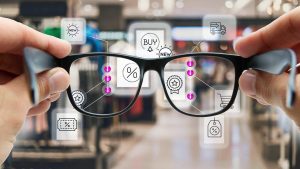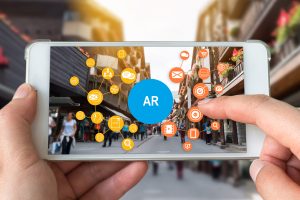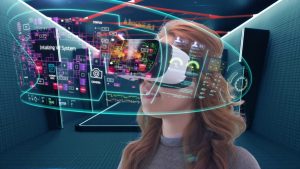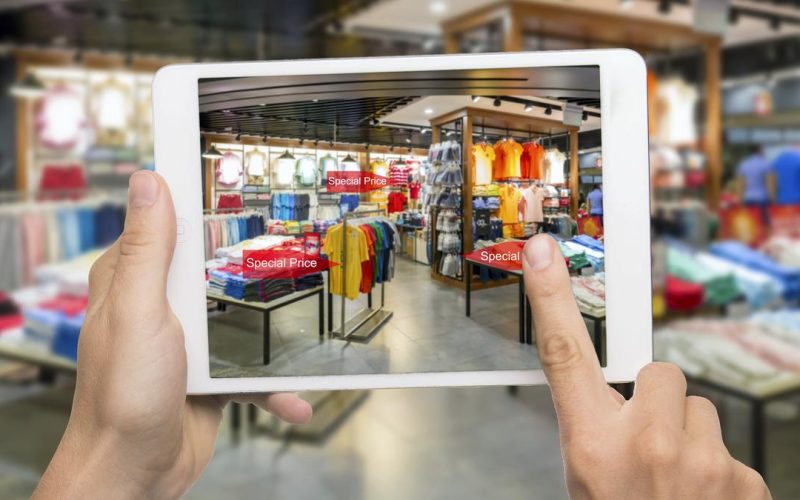Augmented Reality in Retail: Revolutionizing the Shopping Experience
In the fast-paced world of retail, augmented reality (AR) has emerged as a game-changing technology, seamlessly blending the physical and digital shopping realms. AR not only enhances customer experiences but also optimizes operations, offering businesses a competitive edge. This article delves into the transformative power of AR in retail, highlighting its applications, benefits, and future potential.
Introduction to Augmented Reality in Retail

Augmented Reality is a technology that overlays digital elements onto the real world through devices like smartphones, tablets, and AR glasses. In retail, AR serves as a powerful tool to bridge the gap between online and offline shopping, offering customers immersive and interactive experiences. By enabling virtual product interaction, AR empowers customers to make informed purchasing decisions, driving satisfaction and loyalty.
Virtual Try-Ons and Product Visualization
One of the most impactful applications of AR in retail is virtual try-ons and product visualization. This technology allows customers to try products digitally before purchasing, reducing the need for physical interaction.
Examples:
- Beauty and Cosmetics: Sephora’s AR-powered Virtual Artist app enables customers to try on makeup products virtually using their smartphones. Shoppers can experiment with various shades of lipstick, eyeshadow, and blush, ensuring the perfect match.
- Furniture and Home Décor: IKEA’s Place app lets users visualize how furniture fits and looks in their homes. By using AR to superimpose digital furniture into real spaces, customers can confidently make purchasing decisions.
Benefits:
- Reduces product returns by ensuring customer satisfaction.
- Enhances convenience by eliminating the need to visit physical stores.
- Boosts customer engagement with interactive features.
In-Store AR Enhancements
Physical retail stores are leveraging AR to create unique and engaging in-store experiences. By integrating AR with smart mirrors, kiosks, and mobile apps, retailers are redefining the shopping journey.
Examples:
- Saks Fifth Avenue: The luxury retailer implemented an AR app that allows shoppers to virtually try on clothing and accessories. Smart mirrors provide personalized product recommendations, enhancing the shopping experience.
- Interactive Displays: Retailers like Zara have incorporated AR displays in stores, allowing customers to see virtual models wearing the latest collections.
Benefits:
- Attracts foot traffic with innovative technology.
- Provides personalized shopping experiences.
- Encourages customers to spend more time in stores, increasing purchase likelihood.
Meta’s AR Platform Changes and Impact

In a significant shift, Meta announced the closure of its Spark AR studio by January 2025, making third-party AR effects on Instagram inaccessible. This decision has far-reaching implications for brands and creators who relied on the platform for AR campaigns.
Challenges:
- Brands must seek alternative platforms to continue their AR initiatives.
- Creators face disruptions in their marketing strategies.
Opportunities:
- Encourages innovation as brands explore new AR tools and platforms.
- Opens the door for emerging technologies to fill the void left by Meta’s changes.
AR in Digital Fashion
The fashion industry is embracing AR to revolutionize how customers interact with digital-only garments. This innovative approach merges physical and virtual fashion, offering new opportunities for personalization and creativity.
Examples:
- Syky’s Vision Pro App: Designed for Apple’s Vision Pro headset, this app allows users to interact with digital fashion items in mixed reality. Users can alter the appearance of virtual garments, blending them seamlessly into their surroundings.
Benefits:
- Promotes sustainable fashion by reducing the need for physical production.
- Encourages creativity and self-expression in digital spaces.
- Enhances brand differentiation in a competitive market.
AR for E-Commerce and Logistics Optimization
AR is also making strides in e-commerce and logistics by streamlining processes and enhancing user experiences.
Examples:
- Kaptura’s IMS 360: This 3D scanner creates digital twins of products, providing detailed data to optimize logistics and inventory management. Retailers can use this technology to improve operational efficiency and reduce costs.
Benefits:
- Reduces time and resource wastage in logistics.
- Enhances the accuracy of inventory management.
- Improves customer satisfaction with precise product details.
Consumer Engagement and Personalization through AR
AR excels in delivering personalized and engaging shopping experiences. By analyzing customer preferences and behaviors, AR-driven tools provide tailored recommendations and experiences.
Examples:
- Virtual Shopping Assistants: Retailers like Amazon use AR to suggest products based on customer preferences, creating a curated shopping experience.
- Gamified AR Experiences: Brands like Nike have implemented AR games and challenges to engage customers and drive loyalty.
Benefits:
- Strengthens customer relationships through tailored interactions.
- Increases brand loyalty by offering memorable experiences.
- Drives higher conversion rates with targeted product suggestions.
Challenges in AR Implementation
While AR offers numerous benefits, its implementation comes with challenges that businesses must navigate.
Key Challenges:
- High Costs: Developing and maintaining AR solutions can be expensive for small and medium-sized retailers.
- Technical Limitations: Ensuring compatibility across devices and platforms can be challenging.
- Adapting to Platform Changes: As seen with Meta’s decision, reliance on third-party platforms poses risks.
Solutions:
- Invest in scalable and adaptable AR solutions.
- Collaborate with technology providers for cost-effective implementation.
- Stay updated on industry trends and platform changes.
Future Trends in AR Retail Applications

The future of AR in retail looks promising, with advancements in technology driving innovation and adoption.
Emerging Trends:
- Mixed Reality Experiences: Integration of AR with virtual reality (VR) to create immersive shopping environments.
- AI-Powered AR: Combining AR with artificial intelligence to enhance personalization and predictive analytics.
- Wearable AR Devices: Adoption of AR glasses and headsets for hands-free shopping experiences.
Potential Impact:
- Expands the scope of AR applications beyond retail to include entertainment and education.
- Enhances customer satisfaction with seamless and intuitive experiences.
- Drives innovation across industries, fostering cross-sector collaboration.
Conclusion: The Growing Significance of AR in Retail
Augmented Reality is reshaping the retail landscape, offering immersive and interactive experiences that cater to modern consumer demands. From virtual try-ons to in-store enhancements, AR bridges the gap between physical and digital shopping, fostering convenience, engagement, and satisfaction. Despite challenges, the future of AR in retail holds immense potential, promising to revolutionize how we shop and interact with brands.
As businesses continue to embrace AR, they not only enhance their offerings but also pave the way for a more connected and innovative retail ecosystem. The journey has just begun, and the possibilities are endless.










